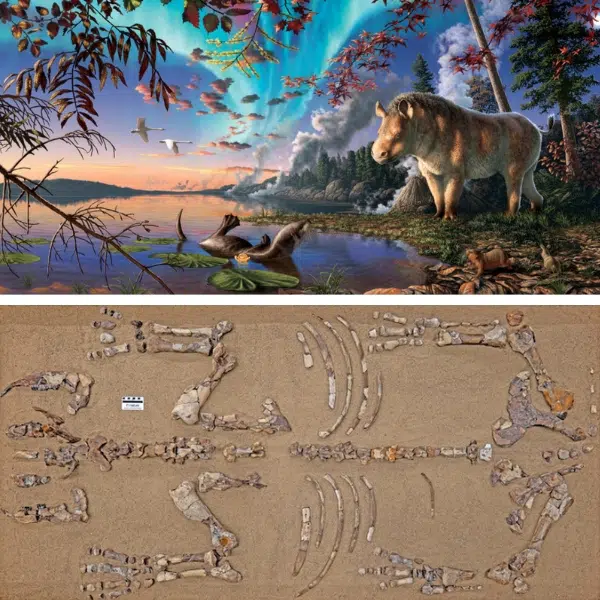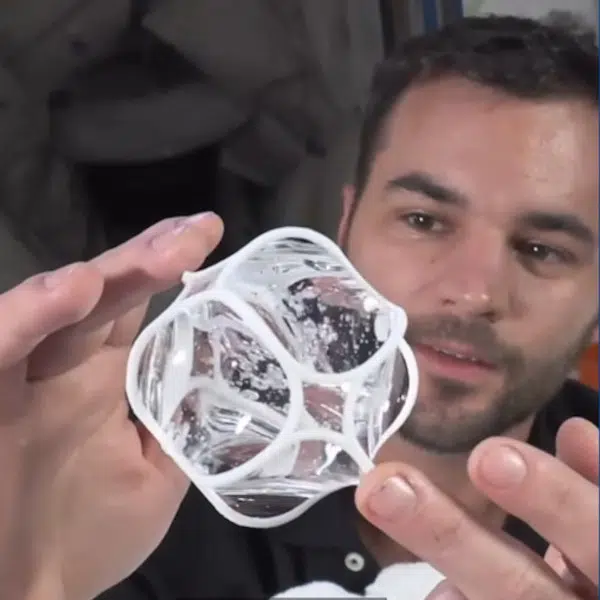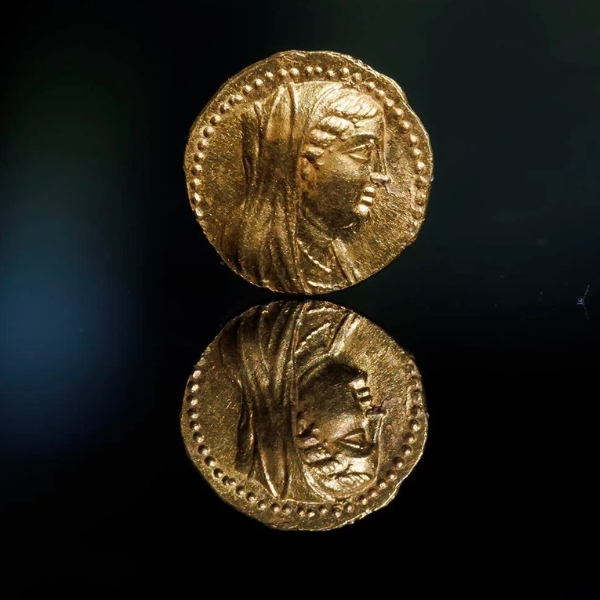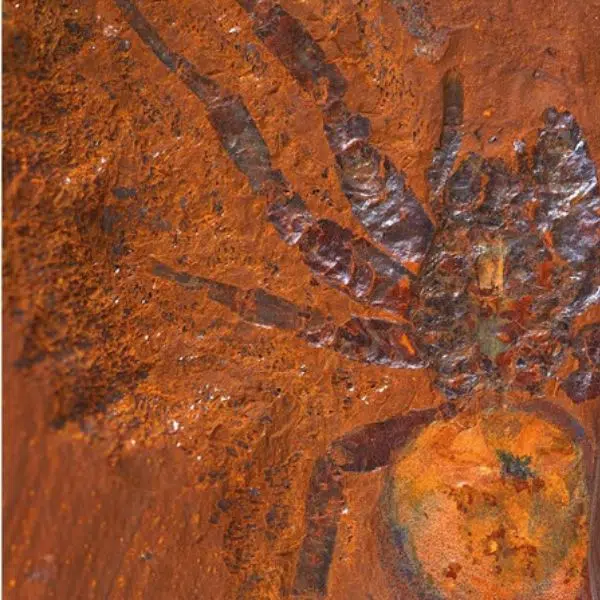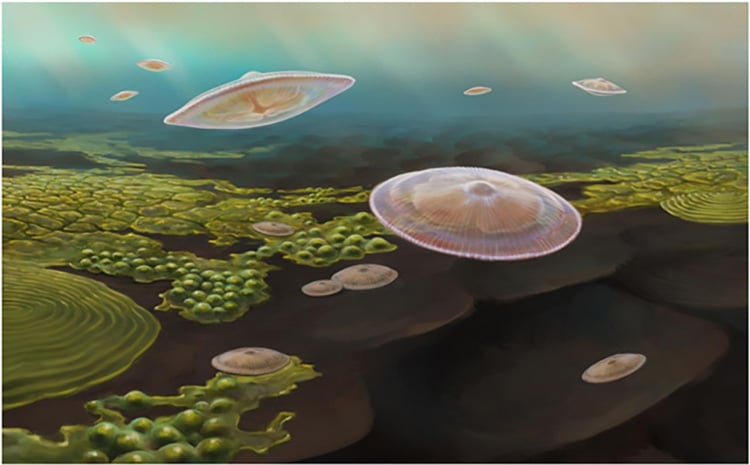
An artist's impression of this early earthly life. (Photo: A. El Ambani)
Humans, cats, dogs, chickens, rats, trees, fungi—today, complex life on Earth comes in a remarkable number of variations. Its evolution has taken many twists and turns over millions of years, including the asteroid that wiped out the dinosaurs and the development of “legs” for sea creatures to take to the land. But when did this prehistoric parade of evolution begin? Evidence of microbes has been discovered dating back 3.7 billion years. These tiny organisms could survive in the methane-filled atmosphere of the period, but they were not complex life forms. A new paper in Precambrian Research suggests that complex life may have emerged 1.5 billion years earlier than the generally held consensus, a full 2.1 billion years ago.
Photosynthesizing life forms appeared 2.4 billion years ago, producing a significant change in our planet's atmosphere with their output of oxygen. The first animals showed up around 800 million years ago with specialized cells and DNA. These included sponges. Around 580 million years ago, life forms diversified even more across the waters of the oceans. Known as the Ediacaran Period, this growth was enabled by and contributed to shifting nutrients in the water and atmosphere. But could complex life have made an appearance in our planet's history earlier than expected?
Examining rocks in Gabon, researchers looked for oxygen and phosphorus levels similar to those of the Ediacaran Period waters in rock layers surrounding mysterious inclusions in the geological record. They discovered a similarity in environment, which supports the idea that these peculiarities might be fossils of something akin to slime mold. While a basic single-celled organism, this prehistoric life would have existed around 2.1 billion years ago.
“We're saying, look, there's fossils here, there's oxygen, it's stimulated the appearance of the first complex living organisms,” says Professor Ernest Chi Fru of Cardiff University to the BBC. “We see the same process as in the Cambrian period, 635 million years ago—it helps back that up. It helps us understand ultimately where we have all come from.”
The paper describes how shifting tectonic plates produced a trapped “sea” with high levels of oxygen and phosphorus that gave birth to life.
The professor continues, “This would have provided sufficient energy to promote increases in body size and greater complex behavior observed in primitive, simple animal-like life forms such as those found in the fossils from this period.” When the population's nutrients ran out, he says, this isolated blip in life's development died out.
Some scientists are skeptical that complex life, in fact, emerged despite the unique conditions that existed. Professor Graham Shields of University College London, not one of the research team, noted to the BBC, “I'm not against the idea that there were higher nutrients 2.1 billion years ago, but I'm not convinced that this could lead to diversification to form complex life.”
While more work must be done to confirm the paper's hypothesis, there is still so much about the ancient past of life on Earth that is open for discovery and debate.
A team of researchers believe they have discovered evidence that complex life evolved 2.1 billion years ago.
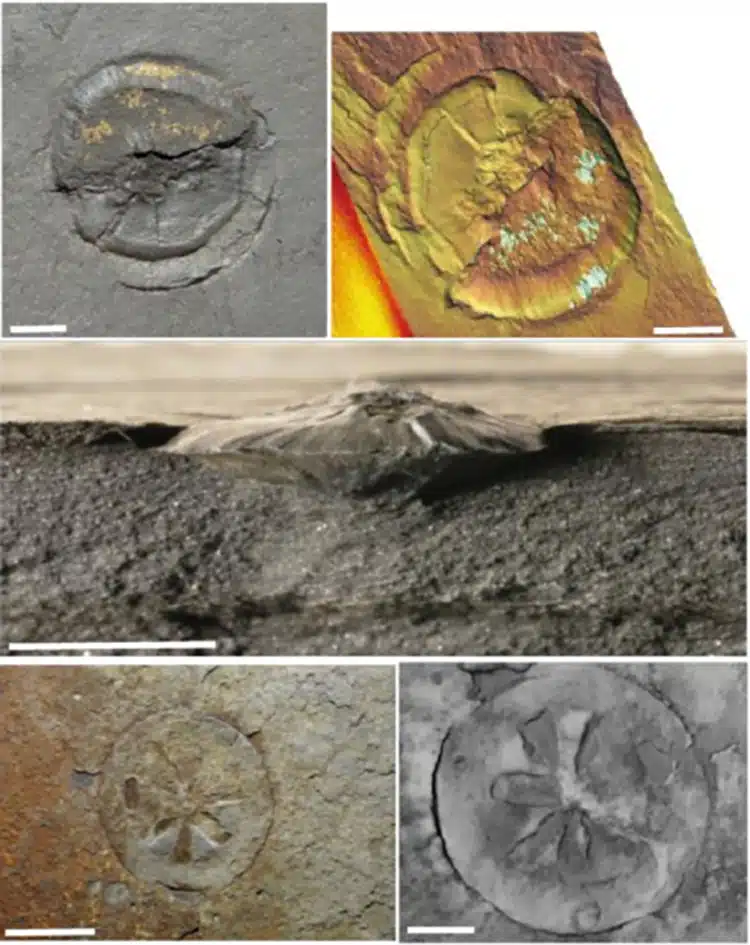
Fossilized macroscopic protist organisms. (Photo: A. El Albani & A. Mazurier)
h/t: [BBC, Synchrotron Soleil]
Related Articles:
Man Finds 82-Foot-Long Dinosaur Fossil in His Backyard
Three Young Boys Discover Rare Tyrannosaurus Rex Fossil While on a Hike
Crustacean Fossil of Previously Unknown Species of Giant Crab Found in New Zealand
Stegosaurus Worth $45M Becomes the Most Expensive Dinosaur Fossil Ever Sold at Auction













































































